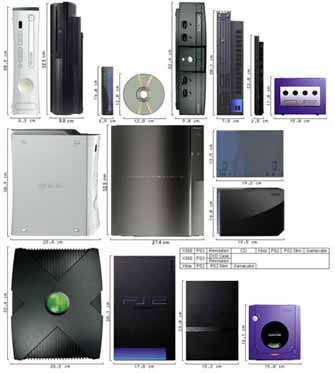Because PowerPC 750CL has a size of 16mm^2 and Broadway size is 25mm^2, just the the half than the PowerPC 750GX at 130nm.
That 25mm^2 number was estimated from how many dies IBM squeezed onto a 300mm wafer. All it takes is a 0.5 mm margin per side and CPU to the neighbouring dies on the wafer and we have a 4x4 die instead of a 5x5 one. Since we know there are going to be margins for cutting the dies, this seems quite reasonable, no?
I can't help feeling that going with a SoC would have made some sense given the tiny die sizes. I definitely can't see Nintendo shrinking the CPU to 45nm geometries at the end of the console life cycle!



